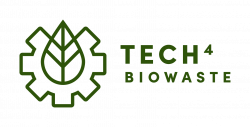Gasification
| Technology | |

| |
| Technology details | |
| Name: | Gasification |
| Category: | Conversion (Thermochemical processes and technologies) |
| Feedstock: | Garden and Park waste (lignocellulosic biomass, dry organic fraction of municipal solid waste) |
| Product: | Producer gas, Syngas |
Gasification is the conversion of a solid or liquid organic compound in a gas phase and a solid phase. The gas phase, usually called 'syngas' or 'producer gas', has a high heating power and can be used for power generation or biofuel production. The solid phase, called char, includes the organic unconverted fraction and the inert material present in the treated feedstock. The syngas produced is a gas mixture of carbon monoxide (CO), hydrogen (H2), methane (CH4), and carbon dioxide (CO2), as well as light hydrocarbons, such as ethane and propane, and heavier hydrocarbons, such as tars. Undesirable gases, such as sulphidric (H2S) and chloridric acid (HCl), or inert gases, such as nitrogen (N2), can be present in the syngas. Conversion of organic material is achieved by exposing the feedstock to high temperatures, typically 700°C - 1100°C in the presence of a gasifying agent. The gasifying agents used are air, oxygen, steam or a mixture thereof.
Gasification of organic material offers several advantages. The produced syngas can be more efficient than direct combustion of the original feedstock, and can be used for multiple applications, such as heat and electricity generation, including high temperature heat for industry, for mechanical energy, as transport fuel, as raw material for chemicals, and when cleaned and upgraded to near pure methane, can be injected into the grid.
Feedstock
Origin and composition
Usually, gasifiers use wood and other lignocellulosic biomass. It can also be designed to convert the dry organic fraction of municipal solid waste (MSW). Depending on the nature of the organic material, the presence of the moisture content generally varies from 5% to 35%.
Pre-treatment
Process and technologies
Gasification process
The principal reactions of the gasification are endothermic and the necessary energy for their occurrence is granted by the oxidation of part of the organic material, through an allo-thermal or an auto-thermal phase. In the auto-thermal process, the gasifier is internally heated through partial combustion, while in the allo-thermal process the energy required for the gasification is supplied externally. Considering the auto-thermal system, gasification can be seen as a sequence of several stages. The main steps of the gasification process are:
- Oxidation (exothermic stage)
- Drying (endothermic stage)
- Pyrolysis (endothermic stage)
- Reduction (endothermic stage)
Oxidation
The partial oxidation of the feedstock is necessary to obtain the thermal energy required for the endothermic stages of the process in order to maintain the operative temperature at the required value. The oxidation phase is carried out in near oxygen free conditions in order to oxidize only part of the feedstock. The main reactions that take place during the oxidation phase are the following:
ΔH = -349 kJ/mol (Char combustion)
ΔH = -111 kJ/mol (Partial oxidation)
ΔH = -242 kJ/mol (Hydrogen combustion)
The main product of this phase is thermal energy, while the combustion product is a gas mixture of CO, CO2 and water.
Drying
During the drying phase, the moisture contained in the feedstock is evaporated. The amount of heat required is proportional to the feedstock moisture content. Generally, the heat required derives from the other stages of the process.
Pyrolysis
Pyrolysis is the thermochemical decomposition of organic compounds. In particular, the cracking of chemical bonds takes place with the formation of three different fractions: a solid, a liquid and a gaseous fraction. The pyrolysis reaction takes place with a temperature in the range of 250-700°C. It is an endothermic reaction and, as in the drying step, the heat required comes from the oxidation process. The pyrolysis of organic material can be schematized with the following overall reaction:[1]
Since the feedstock is made of biomass and cellulose is its main component, in this reaction the biomass can be indicated with the chemical formula of cellulose (i.e., C6H10O6)
Reduction
The reduction step involves the reaction between the products of the preceding stages of pyrolysis and oxidation, which results in the formation of the final syngas. The main reactions occurring during the reduction step are as follows:
(Boudouard reaction)
(Reforming of the char)
(Water gas shift reaction)
(Methanation)
Gasification technologies
The reactors to gasify a pre-treated feedstock, called gasifiers, essentially differ from one another for mode of contact between the feed material and the gasifying agent, mode and rate of heat transfer, and residence time of the fed material into the reaction zone. Different technological solutions can be implemented to obtain different configurations. Principally, the mode of contact may be in counter-current, co-current, or cross flow, and the heat can be transferred from the outside or directly in the reactor using a combustion agent. The residence time can be in the order of hours (static gasifiers) or minutes (fluidized bed gasifiers). The main reactors used in the biomass gasification process are as follows:
- Entrained flow reactor
- Fixed bed reactor, either updraft (counter-current) or downdraft (co-current)
- Fluidized bed reactor, either bubbling fluidized bed or circulating fluidized bed
- Rotary kiln reactor
- Plasma reactor
Product
The syngas product has a lower heating value (LHV) that ranges from 4 to 13 MJ/Nm3, depending on the feedstock, the gasification technology and the operational conditions[2][3]. Syngas can be processed for obtaining secondary products as heat, electricity, chemicals, bioethanol (via syngas fermentation[4] ), and biodiesel (via Fischer-Tropsch-Synthesis[5]), depending on the type of conversion technology.
Post-treatment
Technology providers
| Company name | Country | Technology subcategory | Technology name | TRL | Capacity [kg/h] | Heating | Reactor | Gasifying agent | Feedstock: Food waste | Feedstock: Garden & park waste |
|---|---|---|---|---|---|---|---|---|---|---|
| ECN/Synova | The Netherlands | - | MILENA-OLGA technology | 8 | - | - | Fluidised sand bed | - | ● | ● |
| Meva Energy AB | Sweden | - | MEVA Technology | 7-8 | 1000 | - | Entrained-flow cyclone | - | ● |
ECN/Synova
| General information | |||
| Company: | ECN/Synova | ||
| Country: | The Netherlands | ||
| Contact: | info@synovatech.com | ||
| Webpage: | https://synovatech.com/ | ||
| Technology and process details | |||
| Technology name: | MILENA-OLGA technology | Technology category: | Conversion (Thermochemical processes and technologies) |
| TRL: | 8 | Capacity: | kg·h-1 |
| Atmosphere: | Air | Catalyst: | |
| Reactor: | Fluidised sand bed | Temperature: | 650-850 °C |
| Other: | |||
| Feedstock and product details | |||
| Feedstock: | Biomass (e.g. agricultural residues), MSW | Product: | Syngas, benzene, toluene, xylene |
Synova is a recycling company established in 2012 which commercialises the MILENA-OLGA technology developed by the Energy research Centre of the Netherlands (ECN). In order to be processed the feedstock needs to be sized before it can enter the system. After that the feedstock is fed into the MILENA gasifier. In presence of steam the feedstock is converted into solids, tars, and gas. Solids enter another chamber where they are combusted in presence of air to heat the fluidised sand bed.
Meva Energy AB
| General information | |||
| Company: | MEVA Energy AB | 
| |
| Country: | Sweden (Pitea, Hortlax plant) | ||
| Contact: | |||
| Webpage: | https://www.mevaenergy.com | ||
| Technology and process details | |||
| Technology name: | MEVA Technology | Technology category: | Conversion (Thermochemical processes and technologies) |
| TRL: | 7-8 | Capacity: | 1000 kg·h-1 |
| Atmosphere: | Catalyst: | Air | |
| Reactor: | Entrained-flow cyclone | Temperature: | 800-1000 °C |
| Other: | |||
| Feedstock and product details | |||
| Feedstock: | Crushed pellets, sawdust | Product: | Biochar, electricity & heat |
Open access pilot and demo facility providers
Patents
Currently no patents have been identified.
References
- ↑ Meilina Widyawati, Tamara L. Church, Nicholas H. Florin, Andrew T. Harris, 2011: Hydrogen synthesis from biomass pyrolysis with in situ carbon dioxide capture using calcium oxide. International Journal of Hydrogen Energy, Vol. 36, 4800-4813. doi: https://doi.org/10.1016/j.ijhydene.2010.11.103
- ↑ K. Qian, A. Kumar, K. Patil, D. Bellmer, D. Wang, W. Yuan, R.L. Huhnke, 2013: Effects of Biomass Feedstocks and Gasification Conditions on the Physiochemical Properties of Char. Energies, Vol. 6, 3972-3986. doi: https://doi.org/10.3390/en6083972
- ↑ Yueshi Wu, Weihong Yang, Wlodzimierz Blasiak, 2014: Energy and Exergy Analysis of high Temperature Agent Gasification of Biomass. Energies, Vol. 7, 2107-2122. doi: https://doi.org/10.3390/en7042107
- ↑ James Daniell, Michael Kopke, Sean Dennis Simpson, 2012: Commercial Biomass Syngas Fermentation. Energies, Vol. 5, 5372-5417. doi: https://doi.org/10.3390/en5125372
- ↑ Marcin Siedlecki, Wiebren de Jong, Adrian H.M. Verkooijen, 2011: Fluidized Bed Gasification as a Mature And Reliable Technology for the Production of Bio-Syngas and Applied in the Production of Liquid Transportation Fuels—A Review. Energies, Vol. 4, 389-434. doi: https://doi.org/10.3390/en4030389







